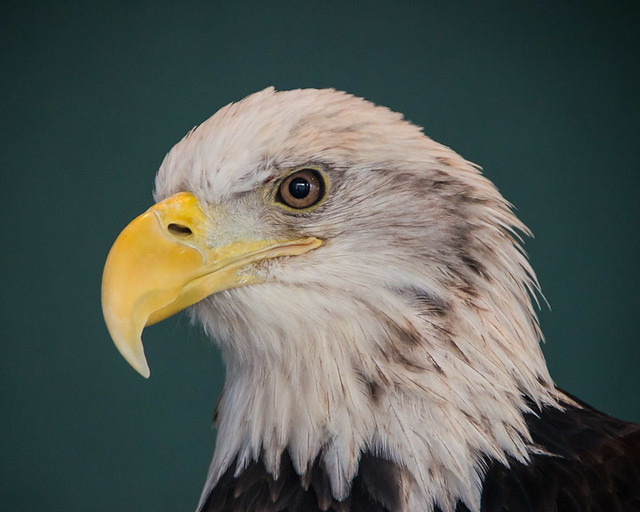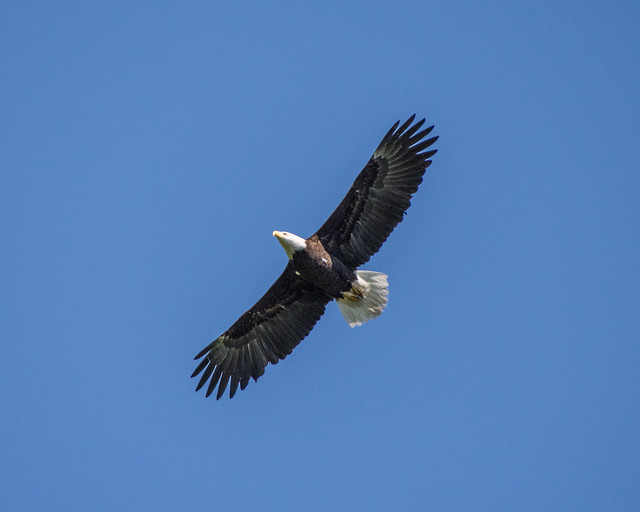Eagles are large, powerful birds. Two species can be found in North America – the bald eagle and the golden eagle.
Bald Eagle
Bald eagles live in forested areas near coasts, rivers, and large lakes. They eat mainly fish, so you’re most likely to spot one in areas where fish are plentiful (near a fish processing plant, a dam, or a spawning run). You may also spot one of their enormous stick nests in large trees near the water.
Size, colour, and shape are useful clues when identifying a bald eagle. They are one of the largest birds in North America with a heavy body, a large head, and a hooked yellow beak. You can often spot their white head and tail which stand out against their chocolate-brown body and wings. Their wings are very large and are flat as a board when they fly. Young birds take 5 years to develop their adult colouring. Until then, they have mottled white on brown markings and their head isn't white.
Did you know? Bald eagles can reach speeds of up to 100 mph when diving or 40 mph when cruising. Young birds are nomads, exploring vast territories and flying hundreds of miles per day.
Look for golden eagles in open areas near mountains, hills, and cliffs in British Columbia and Alberta. They usually nest on cliffs but may nest in trees or tall human-made structures. They hunt mostly small animals (rabbits, hares, ground squirrels, prairie dogs).
Golden eagles soar or glide with wings lifted in a slight V and wingtip feathers spread out like fingers. The adults are dark brown with golden-brown feathers on the back of their head and neck. Their heads are smaller than those of bald eagles. The young have white patches under their wings and at the base of the tail.
Did you know? The golden eagle's territorial/courtship display is known as sky dancing and consists of a series of steep dives and upward swoops.
Nature Companion
You’ll find lots more information about birds on EcoFriendly Sask’s Nature Companion, an entry-level nature app for Canada’s four western provinces.
See Also
EcoFriendly Sask supports Saskatchewan environmental initiatives through an online publication, an events calendar, small grants, and the Nature Companion website/app.
You can follow EcoFriendly Sask by liking us on Facebook, following us on Twitter, or by email (top right corner).



